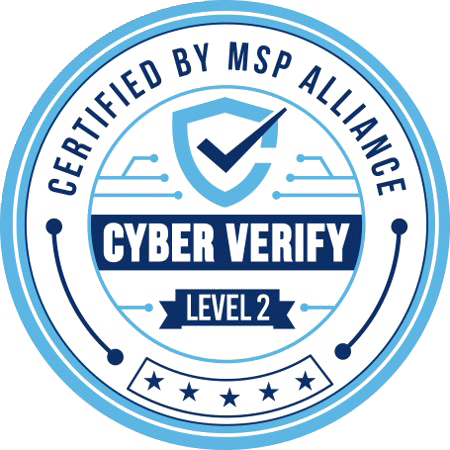42% of business owners acknowledge that they don’t fully utilize their IT tools. Sometimes, this is simply because they didn’t procure the right solutions for their business. Following best practices in your IT procurement strategy can help you avoid that situation.
“Implementing IT procurement best practices is your business’ secret to fully utilizing its IT investments.” – Brian Leger, Co-Founder of InfoTECH Solutions.
Furthermore, CloudSecureTech notes that 83% of respondents in one survey said that their business’s technology can no longer support their needs. That’s why it’s so important to stay on top of your IT procurement practices. Keeping them up-to-date reduces the risk of purchasing obsolete tools.
To help guide your procurement teams, our experts have put together this list of 7 IT procurement best practices. We’ll also go over why leveraging these practices is important and how they affect each step in the procurement process.
The Importance of Using IT Procurement Best Practices
Adopting IT procurement best practices is critical for improving efficiency and managing costs. Organizations that implement these practices often experience higher returns on investment and smoother integration of new IT solutions.
Understanding and prioritizing key elements in IT procurement is essential for optimal outcomes. These elements include cost management, supplier relationships, contract negotiations, risk management, and compliance.
Chose an A+ BBB IT Company to Manage Your Assets After Procurement
Selecting your potential vendors is just the beginning. You need to use your new assets well.
Look HereThe IT Procurement Process & Best Practices
Effective IT procurement involves a strategic approach. Each phase of IT procurement requires specific actions and decisions that can greatly impact the overall success of a project. The following table outlines key steps in the IT procurement process, along with best practices through each stage.
| IT Procurement Step | Description | Best Practices |
| Needs Assessment | Determine your organization’s specific IT needs. | Conduct thorough stakeholder interviews, assess current IT infrastructure. |
| Market Research | Identify potential suppliers and evaluate their offerings. | Research multiple vendors, and evaluate based on pricing, reputation, and service level agreements (SLAs). |
| Request for Proposal (RFP) | Develop and issue RFPs to shortlisted suppliers. | Clearly define project scope, include detailed requirements, and set realistic deadlines. |
| Evaluation and Selection | Assess responses, negotiate terms, and select the best supplier. | Develop a scoring system for proposals, conduct thorough background checks, and negotiate favorable terms. |
| Contract Management | Finalize contracts and ensure compliance with terms. | Ensure all terms are clearly outlined, monitor for adherence, and implement change management procedures. |
| Implementation | Integrate new IT solutions into your existing infrastructure. | Develop a phased implementation plan, ensure staff training, and establish a support structure. |
| Review and Optimize | Continuously monitor performance and adjust as needed. | Conduct regular performance reviews, gather user feedback, and adjust strategies as needed. |
7 General Best Practices in IT Procurement
1. Establish Clear Objectives
Start by outlining what you expect from new technology investments. Align these objectives with your business strategy to get a comprehensive view of the organization’s requirements. Clear objectives guide decision-making and help prevent misaligned purchases.
2. Prioritize Long-Term Value Over Short-Term Costs
While it might be tempting to choose suppliers or solutions based on upfront cost savings, focusing on long-term value is critical. Perform a thorough total cost of ownership (TCO) analysis, considering ongoing support, maintenance, scalability, and potential future needs.
Selecting a solution that may cost more initially but offers flexibility and reliability can provide greater returns over time.
3. Foster Strong Supplier Relationships
Building trust with suppliers enables smoother negotiations, and quicker issue resolution, and can even lead to better pricing or service levels. Long-term relationships foster a partnership where both parties are invested in mutual success.
4. Ensure Scalability
Select IT solutions that can grow with your organization and adapt to future needs. Evaluate whether the technology can be easily upgraded or integrated with new systems as the business expands or diversifies. This practice minimizes the need for frequent re-purchasing. Additionally, McKinsey reports that organizations that lack IT scalability have 8% to 28% lower revenue.
5. Conduct Thorough Risk Assessments
Risk assessments are essential to anticipate and mitigate potential challenges with potential providers. Identify risks related to financial stability, supplier reliability, technology integration, and regulatory compliance. Then, develop contingency plans and establish criteria for mitigating each risk.
6. Maintain Documentation
Keep detailed documentation throughout the IT procurement process, including supplier evaluations, contract negotiations, and implementation procedures. Transparency in documenting decisions, requirements, and changes creates a clear record that can be referenced later if disputes arise.
7. Engage Cross-Departmental Stakeholders
Involve representatives from various departments, such as IT, finance, operations, and legal, in the procurement process to ensure all perspectives are considered. Different departments have unique needs and expertise, and engaging them helps create a more comprehensive evaluation of each potential solution’s impact.
| Streamline Your IT Procurement Cycle With IT Consultants in Louisiana | ||
| New Orleans | Baton Rouge | Lafayette |
Make Informed Procurement Decisions With a Strategic Partner
Finding cost-effective IT solutions that still fit your needs can be difficult. While these best practices will help, you may or may not have all of the time and resources that you need to implement them correctly.
If that’s a concern for you, you can count on InfoTECH Solutions. Our team keeps up with industry-leading best practices and knows how to apply them to our clients’ needs. We also offer managed IT services and IT support to ensure your new technology stays efficient post-procurement.
Reach out to us today to get started.



